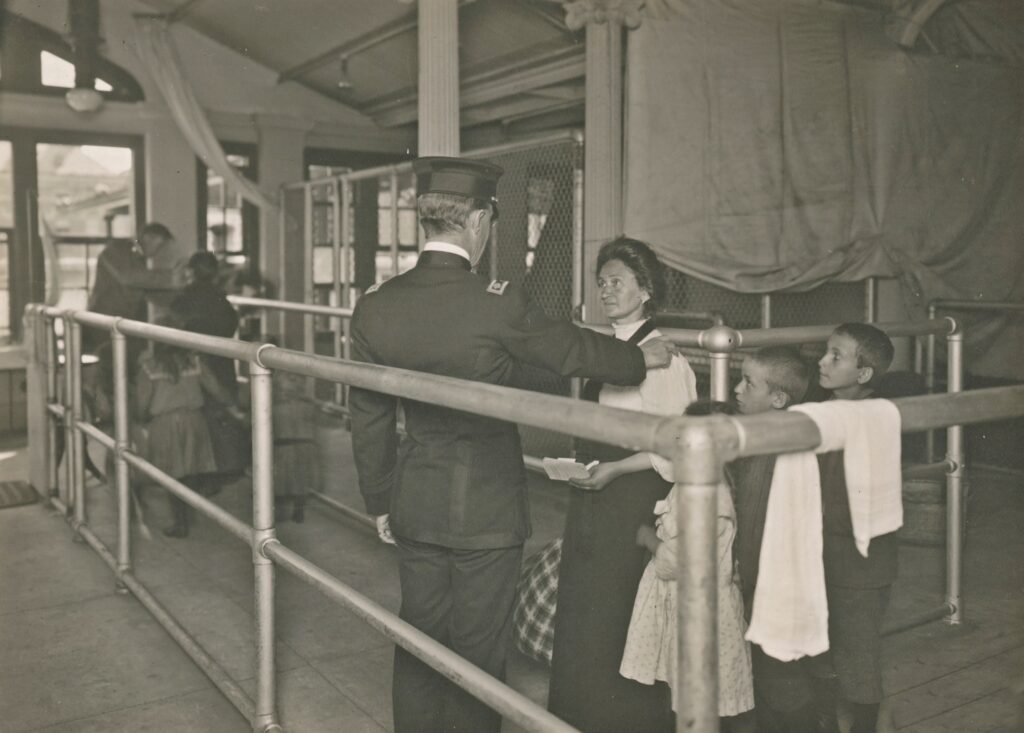Italian Immigrants in the US
I take the stories of Italian immigrants to the United States of America to heart. During one of my trips to New York City, I visited the Ellis Island, also known as the Island of Hope or the Island of Tears, which is a well-known symbol of America’s immigrant heritage. From 1892 to 1954, this immigrant depot had processed the greatest flow of incoming immigrants in the history of the US. Nearly twelve million people landed there in their search for freedom of speech and religion, in their quest for more economic opportunities, and in their hopes to make the life of their children better.

More than two million Italians immigrated to the US. I felt really moved looking at the pictures of that period. I examined the photos of immigrants’ arrivals, what things they brought with them, as well as how they underwent inspections. Poor Italian families longed for better economic opportunities. They believed the US to be the right place for that. I searched passengers’ arrival records and read names on the Wall of Honor.
On the Wall of Honor family names are preserved for the generations to come and see what their ancestors had to go through to make the next generations live in better political and economic conditions. I also found my Italian last name “Ricci” on the Wall. Although I do not have either direct ancestors or relatives who lived or currently live in the US, it was still a pleasant discovery.

Passengers’ classes and Registry Room
The Italians, as well as immigrants from other countries from all parts of the world, had to travel in crowded ships and live in unsanitary conditions near the bottom of steamships with a few amenities, often spending up to two weeks feeling seasick in their bunks during rough crossings of the Atlantic Ocean. Upon arrival to New York City, ships would dock at the Hudson or East River piers.
First and second-class passengers would disembark comfortably, pass the customs at the piers and were free to enter the United States and go whenever they wanted to. The steerage or third and fourth-class passengers could not enter the US immediately.
They were transported from the pier to the Ellis Island by ferry or barge. There, everyone would undergo medical and legal inspections. If the immigrant’s papers were in order and they were in a relatively good health, the Ellis Island inspection process would last for approximately three to five hours. The inspections took place in the Registry Room or the Great Hall, where doctors would briefly scan every immigrant for obvious physical ailments. It was every immigrant’s dream to pass the Ellis Island inspection quickly, yet it did not happen to everyone.

Italian Immigrants, in search of a better life
As a rule, there was a similar story of immigration to the US. In most cases, it was the father and, perhaps, the son or another male family member, who made the first journey to the dream country. Upon arrival and a successful check at the Ellis Island, they found jobs and a cheap place to live, and they sent money back to their homeland, so that the rest of the family might save it enough to buy the tickets to the ship and move to America in some time as well. The Italian immigrants were no different from immigrants of other nations. In the nineteenth and twentieth centuries, an outdated aristocracy and poor farming conditions throughout the southern part of Italy frequently made many poor Italian citizens move to the US in search of a better life.

Starting a new life
A major part of the Italian immigrants came from the rural parts of Italy, such as the former Kingdom of the Two Sicilies. It was a poor region and its population suffered not only from a long-term foreign rule. But also from newly imposed taxes, which were introduced as a result of Italian unification in the nineteenth century. The US was the only chance for these people to start a new life. However, when they came to the US, they were forced to take low-paid jobs and live in bad conditions.
They worked mostly as manual workers and took jobs the natives did not want to. At the beginning, the life in America did not differ from the one they escaped from and it is no wonder. These people did not speak the language. The American employers preferred to underpay them because they knew they could do it and the immigrants had no one to complain to about it. Hard work of the Italian immigrants of the first generation had paved way to their children. With time, the Italian immigrants could improve their social and economic position and joined the white-collar class.

Italian Immigrants are part of the American history
Sadly, like most immigrant groups, the Italians experienced persecution and discrimination before finally being accepted by their new home and getting an important role in shaping the American society. Modern US would not have been the way it is now but for the Italian immigrants, among other factors. They brought their culture, their religion, and even their cuisine. Nowadays, there is a district called Little Italy in almost every big American city. It adds a specific charm and reminds people of a peculiar stage of the American history and the fact that this country has always been open to immigrants, willing to help those in need and give them a second chance for a better life.
Certainly, contemporary successors of the Italian immigrants are already Americans and might not be aware of the traditions of their ancestors. However, they will always be a big part of the American history and its establishment as a great state.
by Severino Ricci
You might also be interested in : Stefano McCoy, a strong connection





No Comments yet!